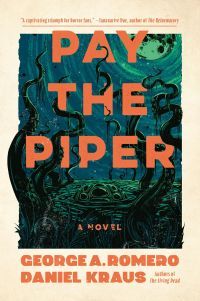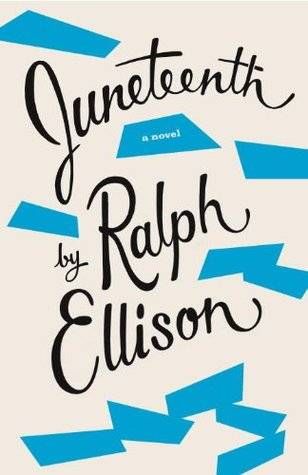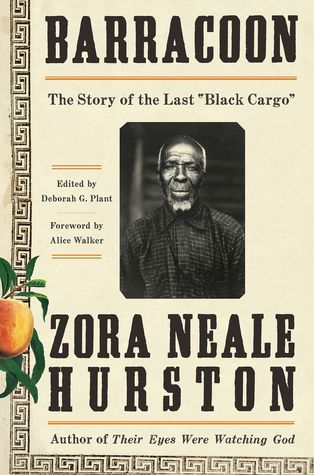
The Strange Case of Posthumously Published Books
Recently, I took an advance copy of Daniel Kraus and George Romero’s Pay the Piper on vacation with me. Yes, the George Romero, the famed director behind Night of the Living Dead.
And yes, the George Romero, who died in 2017.
Pay the Piper (out September 3, 2024) initially caught my eye because of Kraus. I had just read and loved Whalefall, and I was down to read anything else he put out. But the author intro to this book—written by Kraus, obvs—gave me pause.
As Kraus tells it, he came upon Romero’s half-finished novel in 2019 while digging through the University of Pittsburgh Library’s George A. Romero Archival Collection. He was the first person to be granted access to the collection beyond library staff, and the intention was for him to help the library publicize the collection. But then he found 384 pages of this unfinished novel. Upon reading the pages, Kraus got the sense that Romero had absolutely delighted in writing it.
There were no notes left on the project, but Kraus also intuited that Romero had a plan for the book. He speculated that the intro was one of the last things Romero wrote before he died. Upon reflection, Kraus felt strongly that the book’s publication would help show the world what Romero was truly capable of, beyond the zombies he was known for.
I, meanwhile, wondered: What would George Romero think about this? Would he want his unfinished work finished by another author and put into print? How could anyone be sure that the final book had stayed true to his original vision for it? How would he feel about having his name attached to a book he hadn’t been able to finish to his own satisfaction?
Interestingly, Pay the Piper isn’t the first of Romero’s novels to be completed by Kraus. After Romero’s death in 2017, his manager reached out to Kraus about completing The Living Dead, a manuscript Romero had been working on up until he received his lung cancer diagnosis.
“As hard as I worked to develop the book in the spirit of George Romero,” Kraus said in an interview for Film International, “the hard reality of it was that my task wasn’t one of simply gluing together the seams. A lot of the book was going to have to come from my own imagination,” he admitted, “and for that reason, it has to be read as a Romero/Kraus book, not strictly a Romero one. To present it any other way would be dishonest.”
Posthumously published books are nothing new. I myself have gotten lost in titles like The Bright Hour by Nina Riggs and When Breath Becomes Air by Paul Kalanithi, both written with the knowledge that they’d have to be published posthumously. I thoroughly enjoyed I’ll Be Gone in the Dark by Michelle McNamara, the first true crime book I ever read, which was only two-thirds of the way done by the time of the author’s death. The book was later finished by crime writer Paul Haynes, investigative journalist Bill Jensen, and McNamara’s widow, comedian Patton Oswalt. What does the world miss when a beloved author’s work is left incomplete? Does the possible loss justify the risk that the finished product isn’t what it might have been?
What does it mean for an author’s work to be released into the world without that author’s blessing?
Privacy Concerns
We already know of numerous cases in which an author’s wish for their work to remain out of the public eye has been disregarded.
One such case is that of Vladimir Nabokov. Before his death in 1977, he left detailed instructions for Vera and his son Dmitri to burn the remains of his work on The Original of Laura. Despite this, the novel went on sale in 2009. Betrayal!
Emily Dickinson’s entire oeuvre came to us in much the same way. Dickinson told her sister Lavinia to destroy her work after she died. Instead, Lavinia published her collected poems four years after her death in 1890. Dickinson was one of my favorite poets when I was growing up, coming into my own as a writer, cribbing my own terrible poetry. But I can’t help but feel enraged on her behalf.
And what of Anaïs Nin’s Delta of Venus? Nin didn’t necessarily leave instructions for her work to be destroyed, but this particular collection of erotic fiction was commissioned by a private collector. Should it not have remained private?
These incidences seem especially egregious. But what of those cases in which no instructions were left behind?
The Author’s Intentions
As a writer, I don’t love the idea that someone might someday read the works on my computer that no one else deemed good enough to publish.
But the thought that someone could also conceivably edit my work, turning it into a Frankenstein’s monster of a piece that somehow finds its way to publication with my name still attached to it? Terrifying!
(Yes, I also realize that I am not important enough for anyone to feel compelled to do this.)
There have been many cases of posthumously published work where edits were made that were never approved by the original author or unedited work went out that had previously been deemed too messy for publication.
One example is Sylvia Plath’s Ariel. The poetry collection was first released in 1965, two years after her death by suicide. When Plath took her life, she was still married to Ted Hughes, though they were separated. Because of this, he inherited her literary estate, eventually taking it upon himself to make substantial changes to Ariel, changing the initial order of the poems, cutting some of them out entirely, and adding others. The troubled nature of their relationship only makes me more skeptical that Hughes had Plath’s best interests at heart.
Another example is Juneteenth by Ralph Ellison. Apparently, Ellison grappled with writer’s block and also had more than 2,000 pages of material for the book when he died in 1994 at age 80. These were pages that had not yet been shaped into its final form. In 1999, it was edited by John F. Callahan and released at a mere 354 pages. A more complete version—at 1,101 pages—was released in 2010 under the title Three Days Before The Shooting.
Painter Emma Reyes wrote of her life in a collection of letters at the suggestion of historian Germán Arciniegas. She had initially balked at writing down her story. She was illiterate well into her teens, and her writing came across as unschooled. Still, The Book of Emma Reyes was published in Colombia in 2012, five years after her death, and it was later translated into English.
And when Ernest Hemingway’s novel True at First Light was published 38 years after his death, Joan Didion dismissed it as a marketing / money move. She wrote in The New Yorker, “You care about the punctuation or you don’t, and Hemingway did. You care about the ‘ands’ and the ‘buts’ or you don’t, and Hemingway did. You think something is in shape to be published or you don’t, and Hemingway didn’t.”
Can a Posthumous Publication Ever Be Free of Controversy?
Of course, not all posthumously published books are created equally. In some cases—as with the aforementioned books by Riggs and Kalanithi, who wrote their manuscripts while dealing with their own terminal illnesses—instructions are left for a book to be eventually ushered out into the world.
Sometimes, publishing a book after the author’s death is a way to right a previous wrong.
Zora Neale Hurston’s Barracoon, for example, was published after her death, as she was unable to find a publisher during her lifetime. The book was based on her interviews in 1927 with Oluale Kossola (also known as Cudjoe Lewis), who was believed to be the last survivor of the Middle Passage. Publishers balked at the manuscript because of its use of vernacular and because she described the involvement of African people in the business aspects of the Atlantic slave trade.
Civil rights activist Kathleen Collins wrote a series of short stories that, after being rejected by Ms. magazine, sat in a drawer and collected dust until well after her death. Her daughter eventually put them together into a collection that was published as Whatever Happened to Interracial Love?
And while an edited, sanitized version of Richard Wright’s The Man Who Lived Underground was published in 1941, the Library of America published his original manuscript in 2021, a move the Wright estate saw as “poetic justice.”
“Publishing back then was controlled by the need to keep readers in a comfort zone regarding racial ideas,” says the author’s daughter, Julia Wright, in an interview with Esquire, “hence the excision of the first 50 pages on the graphic police brutality of a forced confession. I view the particulars of the rejection of my father’s original, ‘uncomfortable’ manuscript as a sort of elegant literary lynching that does not say its name.”
Posthumously Published Works Will Never Go Out of Style
Whether or not it’s right to publish unfinished works posthumously—with extensive edits, with wholesale additions, or as an unedited, glorious mess—I imagine I’ll continue to enjoy them despite myself. Pay the Piper, for one, was fantastic.
Kraus certainly seems to have the best of intentions.
“It has been the highest honor of my life to shepherd Romero’s incomplete novels to a finished state,” said Kraus in a statement. “Romero’s work helped raise me since the age of five and I see this as going a small way toward repaying that favor. … Pay the Piper, which includes some of the finest writing of his career, gave him a blank canvas on which he could paint a character-focused, atmosphere-drenched, utterly surprising tale of terror. My job was to pick up his brush and fill in the missing pieces. Maybe put a nice frame around it too.”
Would Romero have approved of the finished product? Who can say?
For more on posthumously published books and what it means for publishers, check out Rebecca’s post on the topic.















